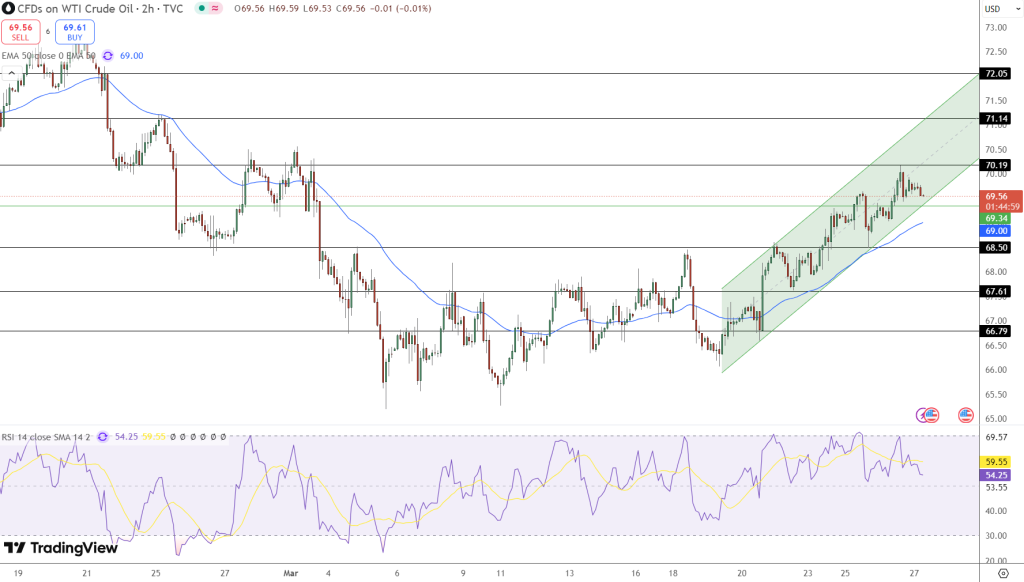Oil Jumps 1% as Venezuela Tariffs and Auto Policy Jolt Supply Outlook
Oil markets climbed Thursday, with WTI crude stabilizing near $69.56, as investors priced in renewed geopolitical supply risks.

The uptick followed U.S. threats of new tariffs on buyers of Venezuelan oil and existing sanctions on Iranian crude, tightening global supply expectations. Energy analysts say the market is now reacting more directly to President Trump’s aggressive tariff strategy.
A key trigger was Wednesday’s report showing U.S. crude and fuel inventories declined, adding fundamental support to the bullish momentum. According to DBS Bank’s Suvro Sarkar, “Trump’s Venezuela and Iran policies are the strongest upside risk to oil prices right now.” India’s Reliance Industries, a major Venezuelan crude buyer, is already planning to suspend imports following the U.S. announcement.
Still, DBS cautions against expecting a return to early-2025 price peaks, citing weak demand signals and growing trade policy unpredictability. Tariff escalation could eventually dampen growth, balancing out short-term gains.
Auto Tariffs Could Fuel Short-Term Demand
In another policy move, the White House announced a 25% tariff on imported cars and light trucks, effective next week. While initially perceived as negative for oil demand, some analysts suggest the decision may paradoxically support crude in the near term.
Tony Sycamore of IG notes that higher vehicle prices may delay the transition to newer, fuel-efficient models. “This could slow the pace of fleet electrification, supporting gasoline demand longer than previously expected,” he said.
At the same time, the broader economic implications remain uncertain. The Dallas Fed’s latest survey of energy executives shows subdued optimism. Though oil and gas activity edged up in Q1, concerns linger over Trump’s separate tariffs on steel and aluminum—materials vital for pipeline and rig construction. These cost pressures could cap future U.S. production expansion.
WTI Technical Outlook: Resistance at $70.19
Technically, WTI crude is consolidating within an ascending channel on the 2-hour chart, holding just above the 50-period EMA at $69.00. This structure reflects sustained buyer interest, despite some signs of waning momentum. Resistance at $70.19 remains a critical level.

A confirmed breakout above that line could drive prices toward $71.14 and $72.05. Key support sits at $69.00, followed by $68.50 and $67.61. RSI levels near 59 indicate a still-bullish, yet cautious, setup.
Key Technical Levels:
Resistance: $70.19, $71.14, $72.05
Support: $69.00, $68.50, $67.61
EMA (50): $69.00
RSI: 59.55 (moderate bullish bias)
Summary
Oil markets are pricing in a volatile blend of geopolitical risks and policy-driven demand shifts. Tariffs on Venezuelan crude and auto imports have sparked near-term bullish sentiment, but longer-term implications remain murky. Traders are watching $70.19 for the next breakout cue, while underlying fundamentals remain tethered to Washington’s evolving trade strategy.



